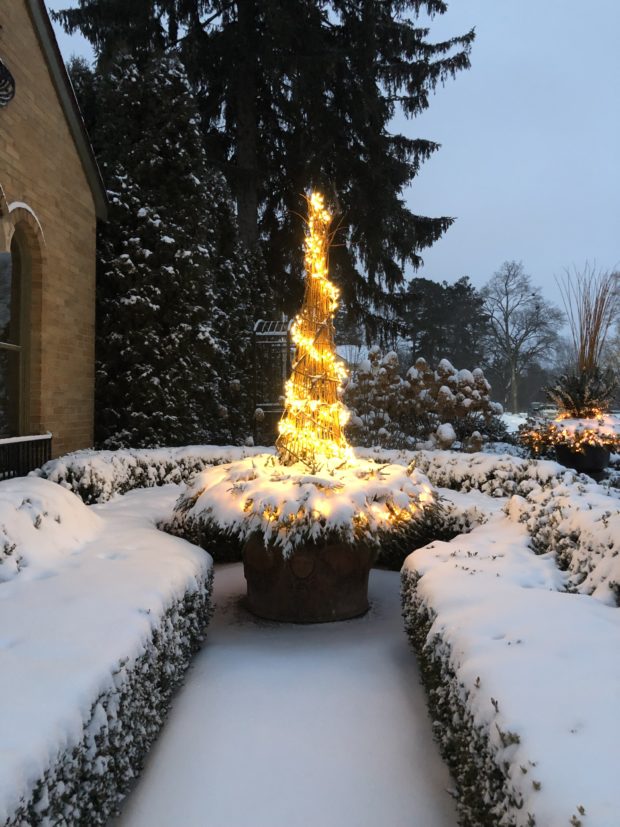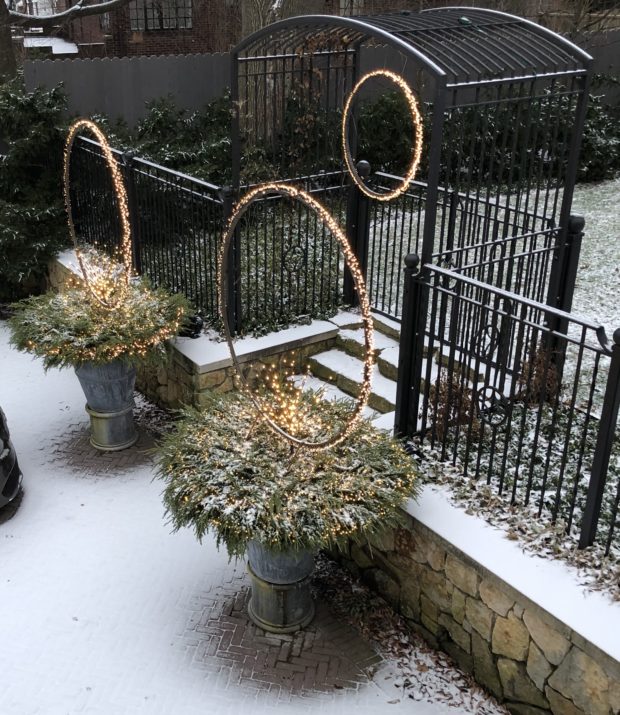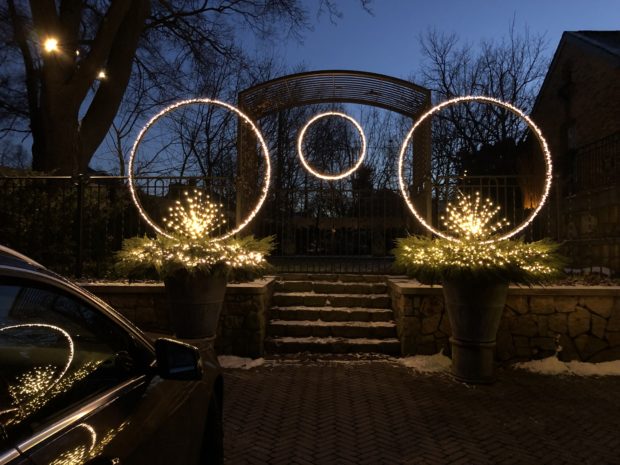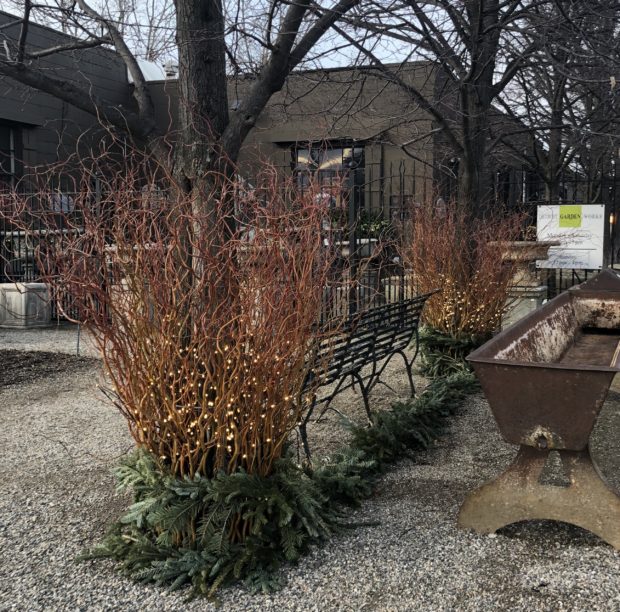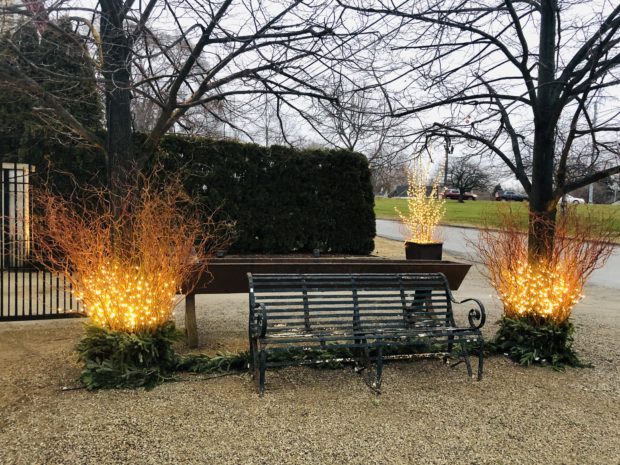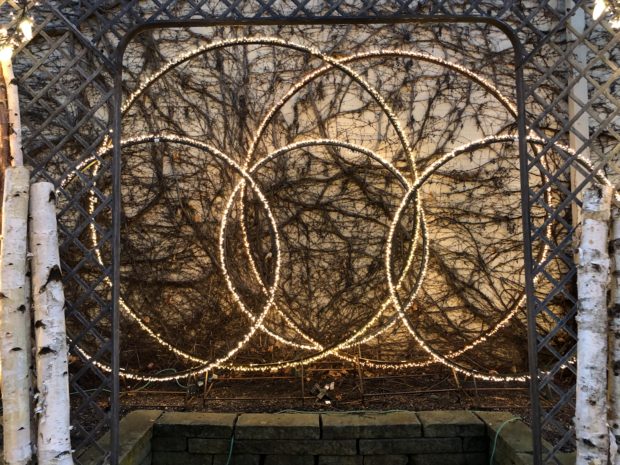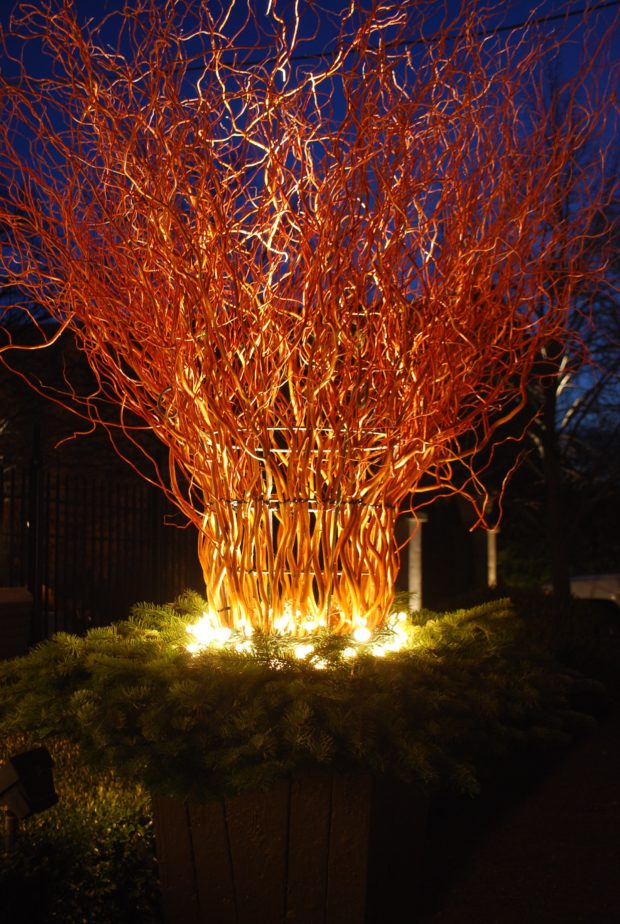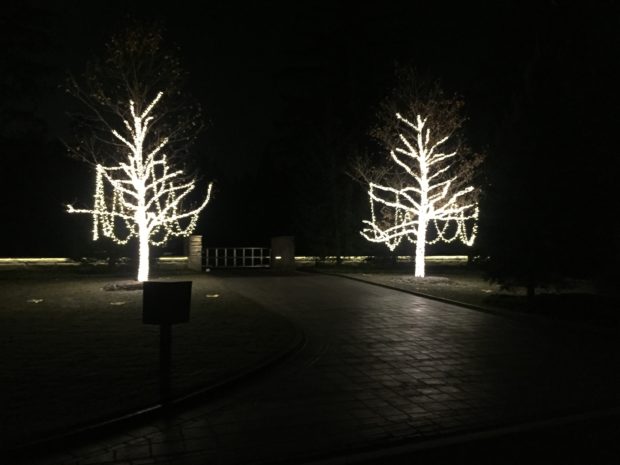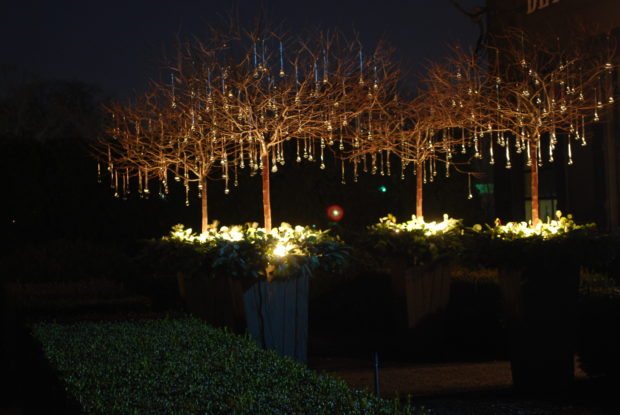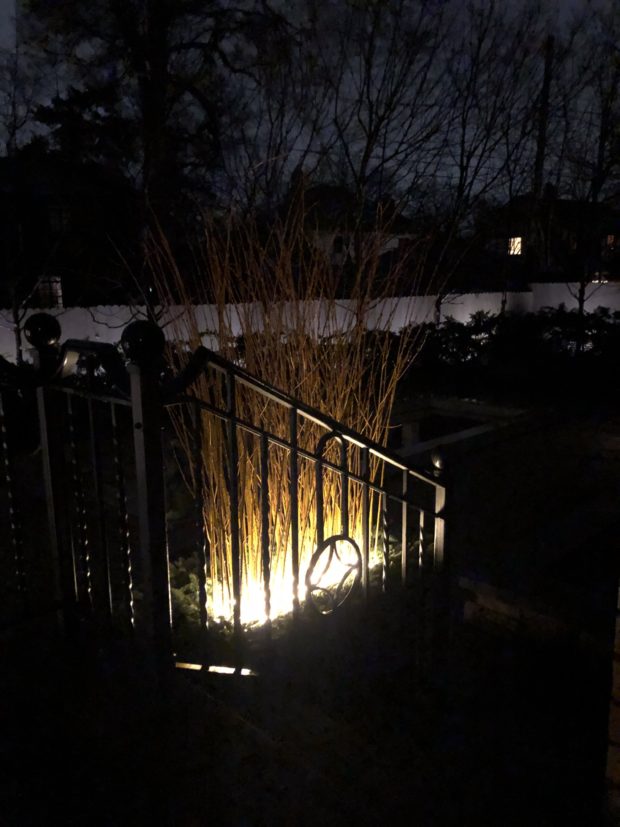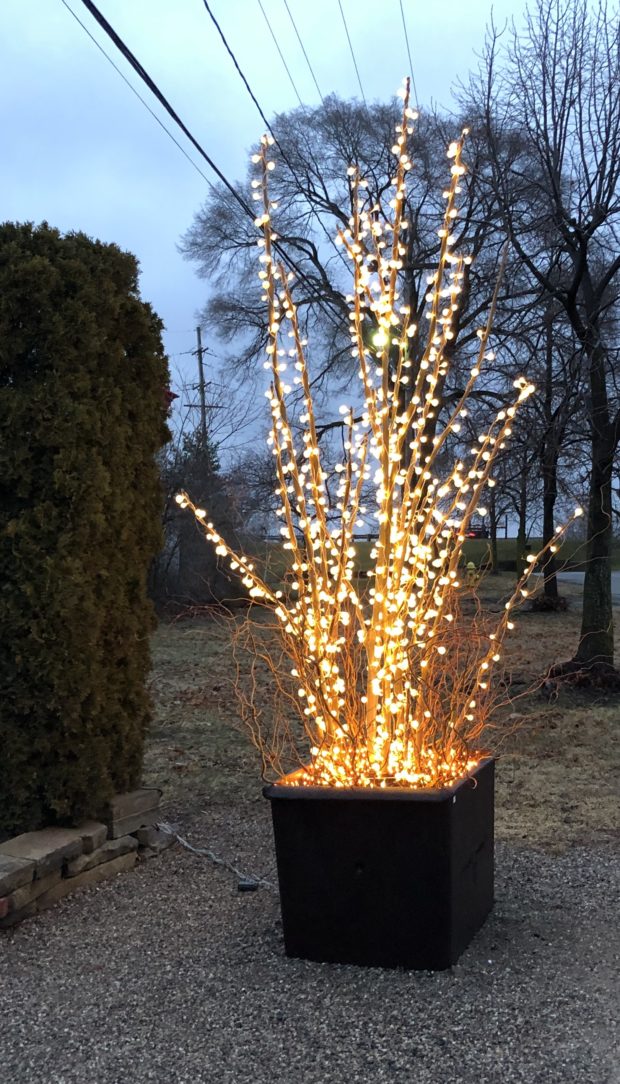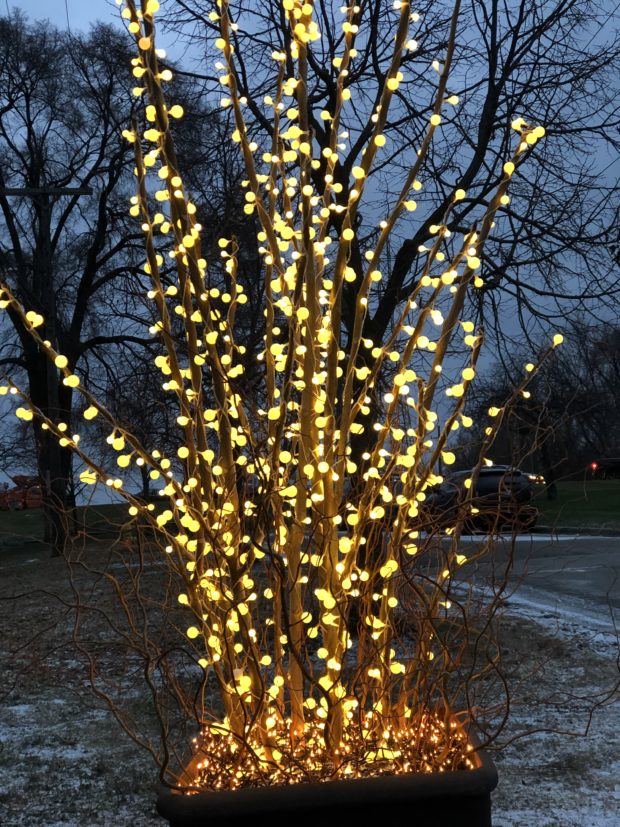 Our winter/holiday installations take place during the day. During regular business hours. But we do endow most every project with some night light. As much as we dare provide for. We guess as best we can about the placement and intensity of light in the winter containers. They provide both container and landscape lighting. Our zone has as much darkness as light over the course of the winter. This means the night view is equally as important as the day view.
Our winter/holiday installations take place during the day. During regular business hours. But we do endow most every project with some night light. As much as we dare provide for. We guess as best we can about the placement and intensity of light in the winter containers. They provide both container and landscape lighting. Our zone has as much darkness as light over the course of the winter. This means the night view is equally as important as the day view.
 The Lumineo LED string lights are an innovation that has made for just about worry free temporary lighting outdoors. They draw about 1/10th of the electricity needed by incandescent light strings, But even though you can walk on the bulbs without breaking them, they do need careful handling. Each strand has a function box. Push the button, and a pattern of flashing or blinking lights can be all yours. Ha! Each strand also has a transformer, that dials down the voltage at the outlet. The wire going in and out of the function box, and the wire going in to the transformer can come loose, if it is stretched too far. We usually reinforce that connection with electrical tape. Early winter rain is the bane of winter lighting, as water and electricity do not mix. Water that seeps into a function box and corrodes the wire inside can cause flickering, or an irreparable short.
The Lumineo LED string lights are an innovation that has made for just about worry free temporary lighting outdoors. They draw about 1/10th of the electricity needed by incandescent light strings, But even though you can walk on the bulbs without breaking them, they do need careful handling. Each strand has a function box. Push the button, and a pattern of flashing or blinking lights can be all yours. Ha! Each strand also has a transformer, that dials down the voltage at the outlet. The wire going in and out of the function box, and the wire going in to the transformer can come loose, if it is stretched too far. We usually reinforce that connection with electrical tape. Early winter rain is the bane of winter lighting, as water and electricity do not mix. Water that seeps into a function box and corrodes the wire inside can cause flickering, or an irreparable short.
 Our electrician advised that we leave all plugs and connected open to the air, as encapsulating them in a zip lock bag means that any water that gets inside is trapped, and will not evaporate. Water gaining access to the connection between a plug and extension cord bodes ill. The fit of one to the other is not always a tight fit. We generously wrap those connections with electrical tape. The best quality and stickiest tape we can find. We also prop up the connections so nothing rests on wet soil. We leave the tags on the lights. They list how many lights are in a given strand, in case we do need to make a replacement.
Our electrician advised that we leave all plugs and connected open to the air, as encapsulating them in a zip lock bag means that any water that gets inside is trapped, and will not evaporate. Water gaining access to the connection between a plug and extension cord bodes ill. The fit of one to the other is not always a tight fit. We generously wrap those connections with electrical tape. The best quality and stickiest tape we can find. We also prop up the connections so nothing rests on wet soil. We leave the tags on the lights. They list how many lights are in a given strand, in case we do need to make a replacement.
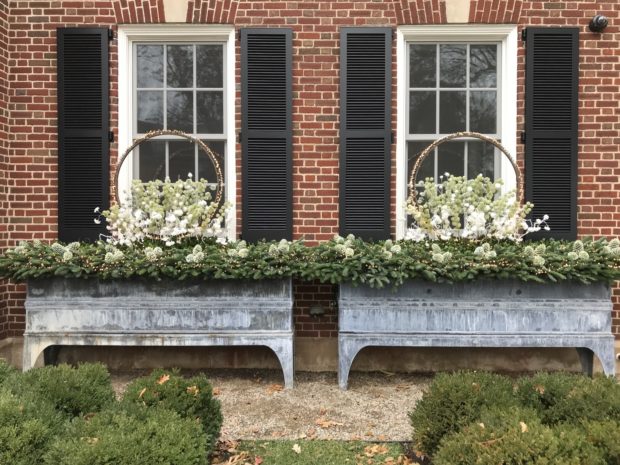 A careful job handling the wiring means you can enjoy those lights all season long. We do run the lights around the clock. Timers can produce a surge of power when the lights go back on that can damage the string. The manufacturer recommends that given how inexpensive they are to run, dispense with a timer.
A careful job handling the wiring means you can enjoy those lights all season long. We do run the lights around the clock. Timers can produce a surge of power when the lights go back on that can damage the string. The manufacturer recommends that given how inexpensive they are to run, dispense with a timer.
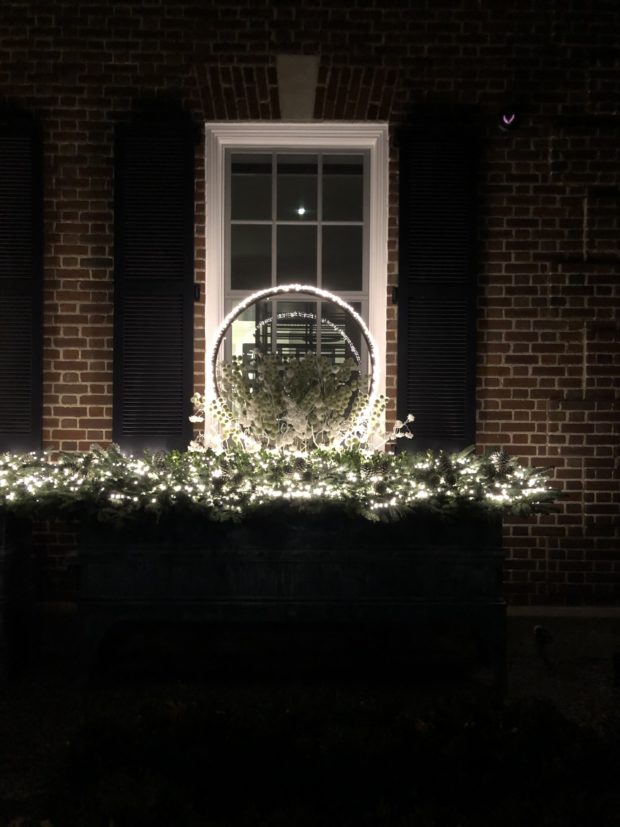 At 4pm, we have dusk, and by 6pm it is dark. As in black dark. Winter lighting can punctuate, highlight, and mitigate that dark.
At 4pm, we have dusk, and by 6pm it is dark. As in black dark. Winter lighting can punctuate, highlight, and mitigate that dark.
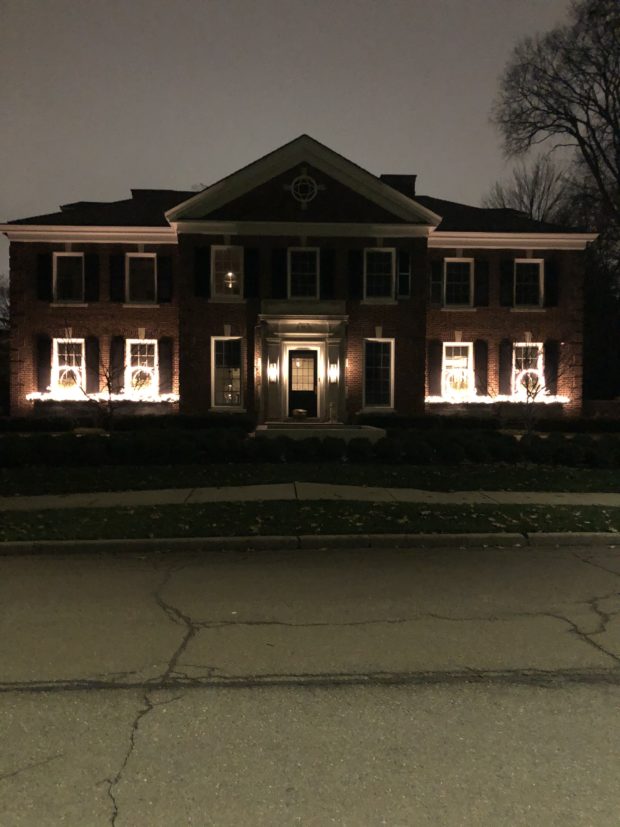 The view from the street is warm and inviting.
The view from the street is warm and inviting.
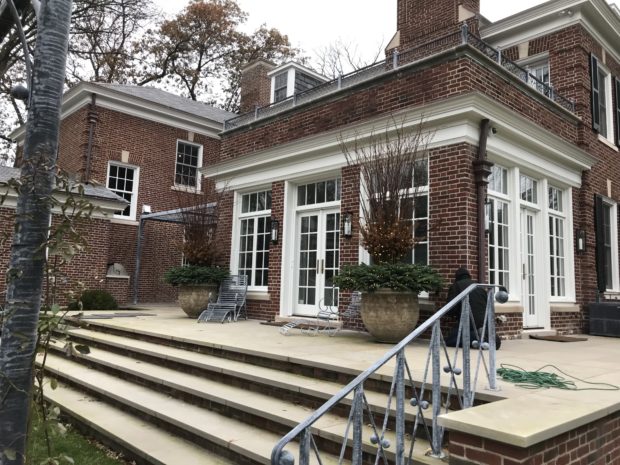 A pair of French pots dressed for winter
A pair of French pots dressed for winter
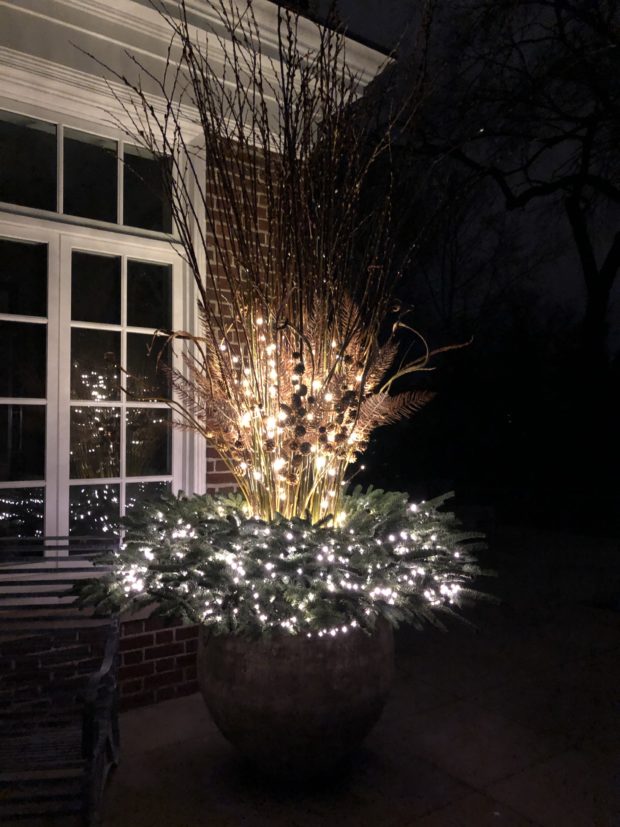 The cooler toned lights in the greens, and the warmer white lights in the pussy willow and pine cone picks is especially effective at dusk.
The cooler toned lights in the greens, and the warmer white lights in the pussy willow and pine cone picks is especially effective at dusk.
 This centerpiece has a 36″ tall light burst inside, which helps to illuminate the branches from within. If you have ever attempted to gracefully run string lights upwards inside a twig bunch, you will appreciate this innovation.
This centerpiece has a 36″ tall light burst inside, which helps to illuminate the branches from within. If you have ever attempted to gracefully run string lights upwards inside a twig bunch, you will appreciate this innovation.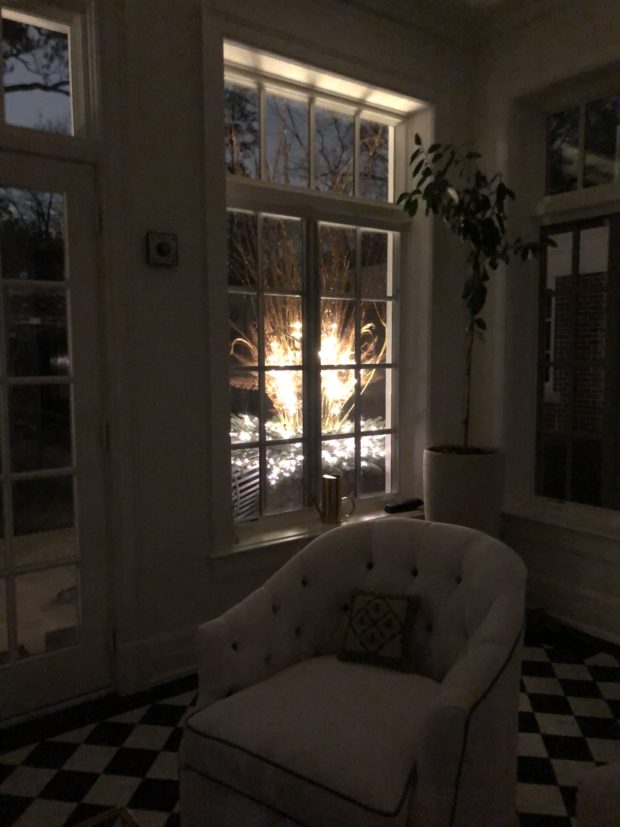 So cozy, this.
So cozy, this.
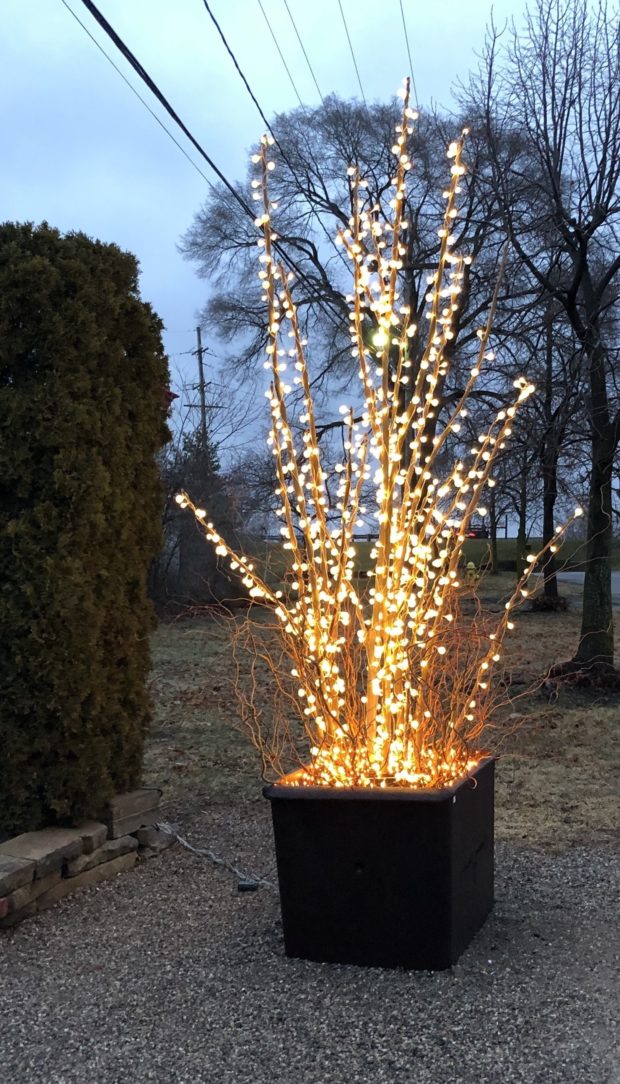 lighted pot at the end of the driveway, 2018
lighted pot at the end of the driveway, 2018
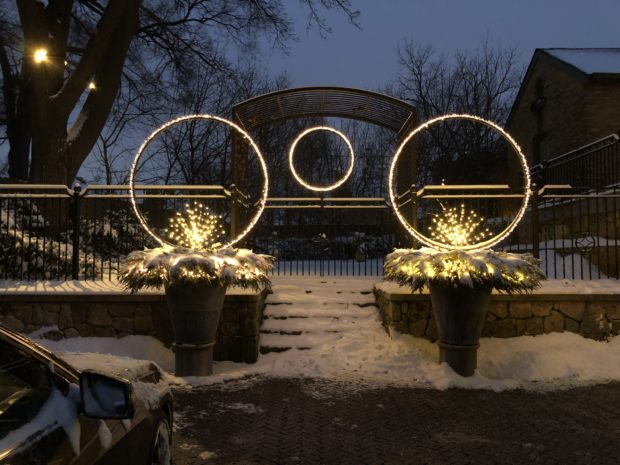 My winter pots are last in line, as they should be. It doesn’t worry me much, as I know I will be driving up to something like what I had in 2018 all winter long.
My winter pots are last in line, as they should be. It doesn’t worry me much, as I know I will be driving up to something like what I had in 2018 all winter long.
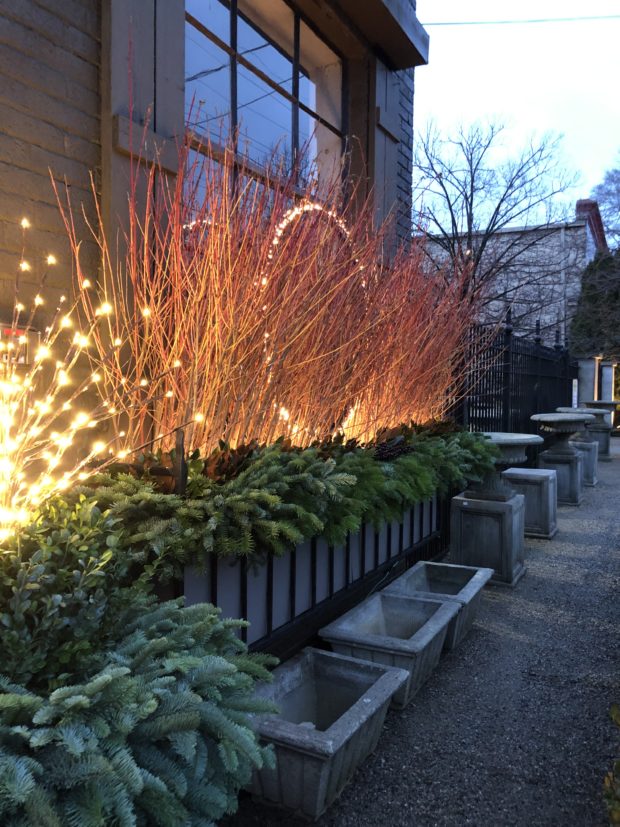 Detroit Garden Works lighted window boxes 2018
Detroit Garden Works lighted window boxes 2018
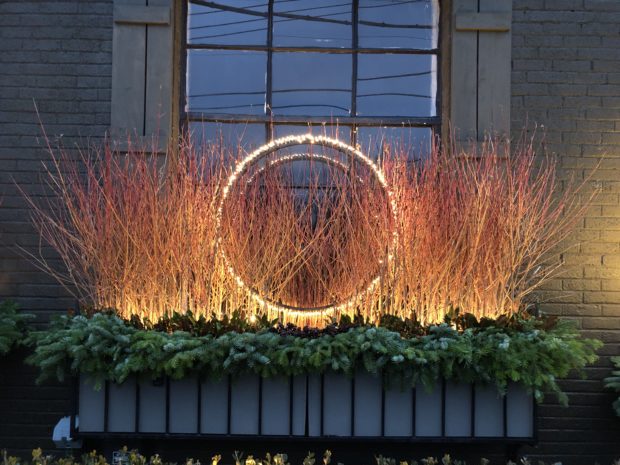 It’s the season for a lighted and lively recollection of the garden.
It’s the season for a lighted and lively recollection of the garden.


